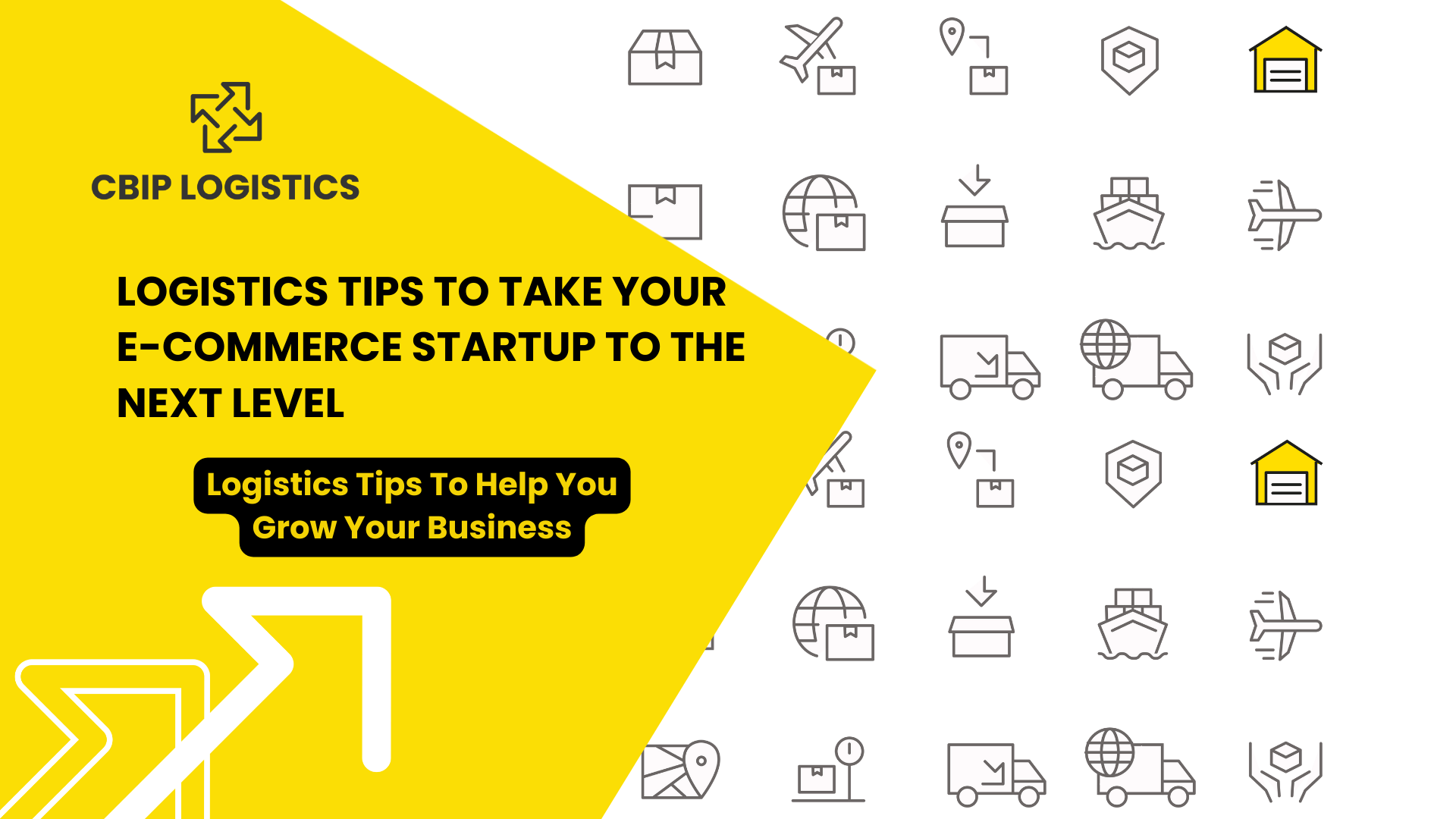Logistics Tips to Take Your E-Commerce Startup to the Next Level

When you’re a small e-commerce business, you want to be as efficient as possible. It’s tough doing all the inventory organizing, picking and packing orders, and coordinating things like carrier pickup/dropoff — and that’s just the beginning.
Once your package is shipped out, your customer expects you to know where it is. After all that, you may need to do it all in reverse if the item is returned.
As a small business, it’s challenging to do all those things yourself, particularly when you don’t have any experience in logistics.
Tons of platforms can help you out with the POS side of managing a retail business, but booking freight and fulfillment can be quite tricky.
Here’s a roadmap for setting up logistics from the beginning.
Read about CBIP's Adaptable 4PL Logistics Services
Step 1: Get shipping software that syncs with your website
As an e-commerce retailer just starting your journey, you want to make sure you are managing things well from the beginning.
There is a lot of info you will need to track, compare, and send to your buyers, so you will need to use some sort of shipping software to manage everything.
Get an account with shipping software that synchs with your platform, such as Pirate Ship, Shipo, Shipstation, or another similar software. The shipping software will help you compare rates, organize orders, and send tracking info to your buyers.
Picking carriers as a startup
Shipping has gotten very pricey these days, so you’ll want to spend some time shopping for the best rates.
This can easily be done through your shipping software. Plus, once things are up and running smoothly with your business, you can apply for a commercial account with the carriers themselves to get better pricing.
Step 2: Invest in shipping materials
While you are in the early stages and fulfilling orders on your own, you’ll need to invest in a few items to facilitate the process.
The first thing you will need is a thermal label printer. Printing off labels and affixing them with tape wastes time and is a huge hassle. Getting a label printer will save you a lot of headaches.
Next, you will need a scale for weighing packages. Depending on your product and shipment types, it might be a good idea to invest in two scales; one for larger parcels, and a more sensitive scale for smaller ones.
Weigh everything carefully and be sure to read the fine print to know how your carrier will charge. For instance, in the US and many other countries, you can be charged using the dimensional/ volumetric weight of the parcel.
Figure this out before you start shipping to avoid wasting money on bulky, expensive packaging that eats up your margin.
Related: How To Know If You Need A Dedicated Logistics Team
Step 3: Set up packing supplies
When you are starting off, you want to be careful where you invest your money, but there is one area you definitely should not go cheap on as a new brand: Packaging.
Starting out is your time to make an impression on customers and build your brand. Packaging that looks “homemade”, or worse, falls apart during shipping, can make a poor impression right off the bat.
You don’t need to get top-of-the-line boxes, but you need quality packing supplies, and you need an efficient packaging method. Get good-quality tape, boxes, mailers, and fillers.
Pro tip: To save time, have multiple sizes and types of boxes you use on hand, put together and ready to fill. You can also pre-pack stock as it arrives to save time while fulfilling orders
Step 4: When you’re ready to grow
Soon, the orders will start rolling in faster than you can get them out on your own. Once your demand outpaces your capabilities as a small-business owner, it’s time to rethink your supply chain and hire out for help.
One of the most important aspects at this point is making sure that you are choosing suppliers, processes, and providers that will allow you to easily scale and grow.
You can choose many different routes to manage your logistics as your business grows and evolves, such as 3PL or 4PL. What you choose depends on what kind of service you want, and what your needs are.
Whatever service you choose for your growing e-commerce, look for these characteristics:
- Provider uses logistics management technology that is agile and centralized to give you all the flexibility you need
- Provider offers flexible options for fulfillment, warehousing, & carriers
- Provider functions as an extension of your team
Ready to grow? Choose CBIP Logistics to bolster your business
For a logistics provider who will support you as you grow and scale your business to new places, you can’t go wrong with a global 4PL.
The 4PL is agility at its finest. As a 4PL ourselves, we do not own the warehouses, carrier networks, and fulfillment centers that our clients use. Instead, we work with a globally located network of independent providers, and we integrate them into our platform using APIs.
This gives us, and our e-commerce retailer clients, by extension, all the flexibility needed to grow and evolve. Since we have partners loathed throughout the globe, we give our clients the ability to connect with dozens of different providers based on their unique needs.
The best part? We integrate our one central technology control tower with your website and POS system, as well as your supplier, to ensure that you have end-to-end visibility on your supply chain.
If you are a growing e-commerce retailer interested in learning about how CBIP Logistics can help smooth your growth transition, reach out today for a free consultation.






